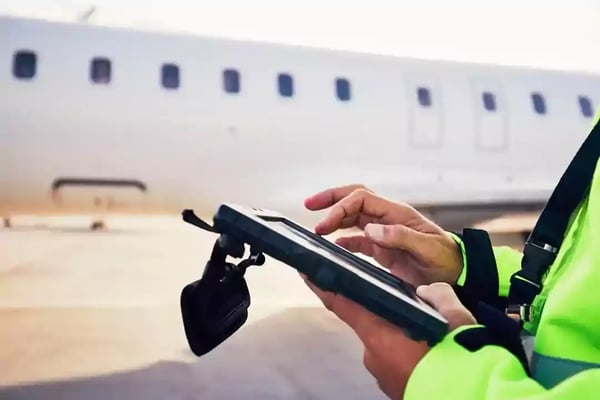Innovation in the aviation industry is often associated with high-tech engines, complex aircraft designs, or even the development of sustainable airline fuel. While these sub-fields of aviation definitely have improvements to be made as technology evolves, it is unlikely that any new ground-breaking technology related to those fields will emerge within the next few decades. Currently, the greatest leaps to be made in the aviation industry are related to airline maintenance. With big data emerging as one of the hottest fields in the past few years, airlines have leveraged complex data software to accelerate their maintenance process.
What is predictive maintenance?
At the root of it, predictive maintenance is the use of technology to determine which parts of an aircraft require tweaking in advance. With access to real-time sensor data and maintenance logs, the right software can accurately determine when a maintenance check will be required before an engine or another crucial aircraft component starts to show signs of suboptimal performance.
Big data and predictive maintenance
Predictive maintenance has been made possible in the past few years largely due to the evolution of big data and the technology surrounding it. Artificial intelligence in particular is responsible for some of the largest advancements in predictive maintenance, as complex machine learning algorithms have studied reams of data related to maintenance logs to identify patterns in an aircraft’s life cycle. These patterns, combined with real-time sensor data, can accurately predict any form of repair that may be required in advance.

Why predictive maintenance is so important
The value of predictive maintenance extends beyond just saving time between landing and take-off. While saving time does often mean saving money for an airline, there is another aspect of maintaining an aircraft that leads to tremendous waste: purchasing spare parts. Repairing a flight engine isn’t quite as simple as tightening a few nuts and bolts. Faulty parts need to be removed and replaced with newer, better parts.
Without the help of predictive maintenance, it would be impossible to know which components need to be replaced before they become worn out. As such, airlines would need to purchase enough spare parts to accommodate for every imaginable situation, even though many of them wouldn’t be used. Predictive maintenance gives airlines advanced notice of when a part will need to be replaced, giving them enough time to purchase the part before they need it and only when they need it.
Data sharing in aviation
Machine learning works best when given large amounts of data to work with. Most airlines simply aren’t capable of producing enough data for their predictive maintenance software to accurately identify patterns related to their aircraft. This is why collaboration and data sharing through secure platforms such as Aviadex.io is an important step in the aviation industry’s prosperity as a whole.
The benefits of Aviadex.io
QOCO’s Aviadex.io is a data exchange and integration service, that allows airlines to leverage their real-time sensor data and other live information to save on time and costs in the maintenance process. In addition, predictive maintenance not only leads to the increased efficiency of engine repair but also gives said engines a greater lifespan. Aviadex.io also guarantees the utmost security to its users, ensuring that an airline’s sensitive information remains within the right hands. In essence, Aviadex.io can be used for a variety of purposes such as APU data etc.


 Andy Graham
Andy Graham
 If you are interested in knowing how you can improve your efficiency in maintenance operations, book a 30-minutes discovery call with us.
If you are interested in knowing how you can improve your efficiency in maintenance operations, book a 30-minutes discovery call with us.

